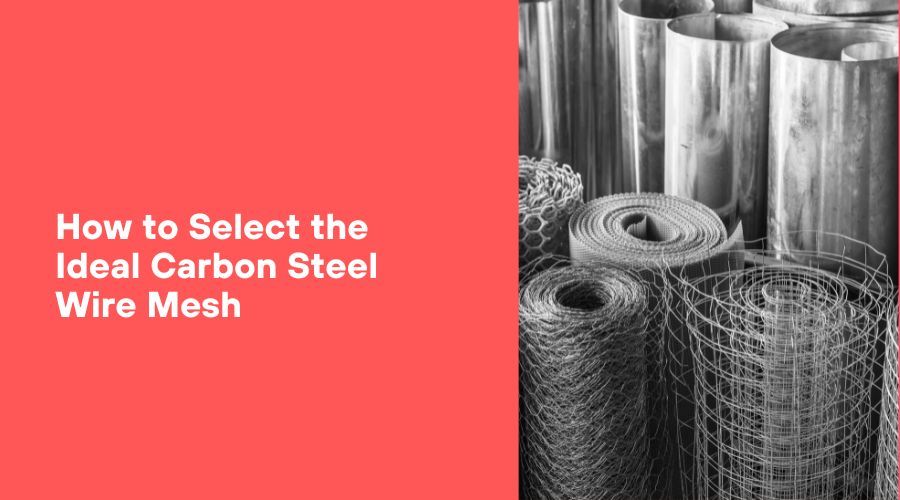How to Select the Ideal Carbon Steel Wire Mesh?

Carbon steel wire mesh is a versatile and widely used material that finds its application in various industries, including construction, agriculture, manufacturing, and more. Its durability, strength, and cost-effectiveness make it a preferred choice for different purposes. However, with numerous options available in the market, selecting the right carbon steel wire mesh can be a daunting task. In this guide, we'll walk you through the essential factors to consider when choosing the ideal carbon steel wire mesh for your specific needs.
1. Mesh Size and Wire Diameter
The mesh size and wire diameter are crucial factors that determine the functionality of the wire mesh. Mesh size refers to the number of openings per linear inch in the mesh, while wire diameter indicates the thickness of the individual wires. The right combination of mesh size and wire diameter depends on the intended application. For instance, smaller mesh sizes and thicker wire diameters are suitable for heavy-duty applications that require higher strength and durability.
2. Material Grade
Carbon steel wire meshes come in different material grades, each with varying properties that make them suitable for specific environments. The two common material grades are low carbon steel and high-carbon steel. Low carbon steel meshes are ideal for applications that require moderate strength and good corrosion resistance, such as general filtration and sieving. High-carbon steel meshes, on the other hand, offer greater strength and are suitable for applications that involve heavy loads and abrasive materials.
3. Weave Type
The weave type of carbon steel wire mesh affects its strength, durability, and filtration capabilities. Common weave types include plain weave, twill weave, and Dutch weave. Plain weave is the simplest and most common weave type, offering equal strength in both directions. Twill weave provides greater strength in one direction and is suitable for applications that require extra stability. Dutch weave has a higher mesh count in one direction, making it excellent for fine filtration purposes.
4. Open Area and Flow Rate
Open area refers to the proportion of open space in the wire mesh, while the flow rate is the amount of fluid or air that can pass through the mesh. These factors are crucial in applications such as filtration, where the efficiency of the mesh depends on its ability to allow passage while retaining particles. A higher open area and flow rate are desirable in situations where quick filtration or efficient ventilation is necessary.
5. Corrosion Resistance
Considering the environment in which the carbon steel wire mesh will be used is essential to determine its required level of corrosion resistance. Carbon steel is susceptible to corrosion, especially in humid or corrosive environments. In such cases, it's recommended to opt for a wire mesh with a protective coating, such as galvanization, to enhance its longevity and performance.
6. Application-Specific Considerations
Every industry and application has unique requirements, and selecting the ideal carbon steel wire mesh requires a thorough understanding of these demands. Whether it's for sifting, filtering, security, or reinforcement, the mesh must be tailored to meet the specific needs of the project. Consult with experts or suppliers who can guide you in selecting the right mesh type, size, and specifications based on your intended application.
Summary
Selecting the ideal carbon steel wire mesh involves careful consideration of various factors such as mesh size, wire diameter, material grade, weave type, open area, flow rate, and corrosion resistance. Understanding the specific requirements of your application is key to choosing a mesh that offers optimal performance, durability, and longevity. By taking these factors into account and seeking advice from professionals in the field, you can confidently choose the perfect carbon steel wire mesh that meets your needs and ensures successful project outcomes.
